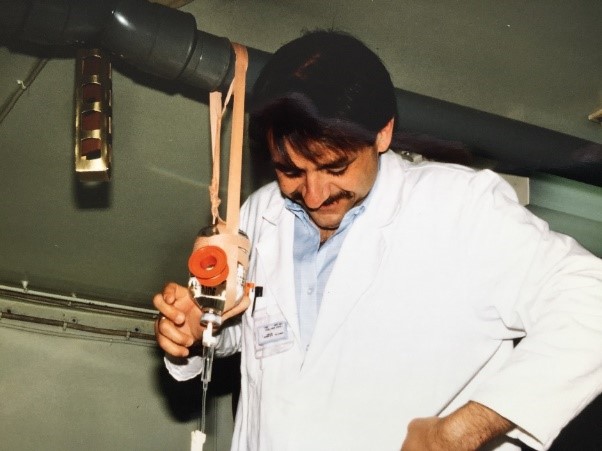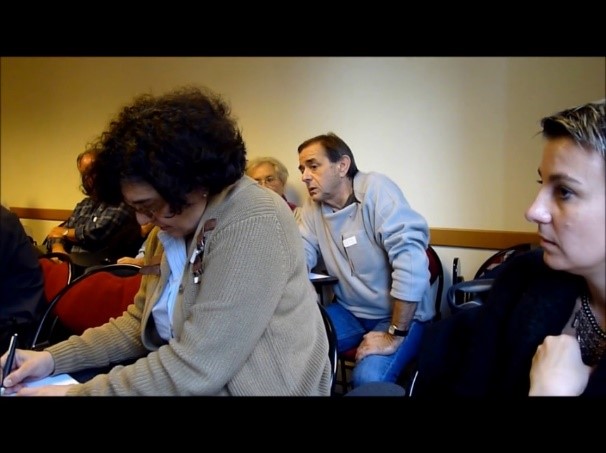The Association for Research on the After-effects of Radiotherapy (ARSER) is a patient association whose essential missions are:
-
- improving the chances of survival of those affected,
- the reduction of suffering due to the after-effects of radiotherapy.
To this end, ARSER aims to develop research into the after-effects of radiotherapy, and therefore to achieve this, to raise funds.
Its aim is not to establish basis for claim: ARSER is not intended to group patients considering they are “victims” of radiotherapy. Rather ARSER wants to inform patients and doctors about the progress of the research on the after-effects of radiotherapy and to finance it.
Dr. Sylvie Delanian is one of the very first physicians in the world to have cared about the after-effects of radiotherapy as a radiotherapist and to have provided answers, particularly for treatments that have been in effect for more than 10 years.
Along with Jean-Louis Lefaix, a researcher at the CEA, and then with Dr. Pierre-François Pradat, neurologist, she led research to better understand the mechanisms and develop new treatments to reduce these after-effects.
Many patients cured of their cancer long ago, called “long-term survivors”, and no longer undergoing medical treatment, are often unaware that the ill-systematised symptoms they suffer are after-effects of radiotherapy.
Editorial
Tribute to Jean Louis LEFAIX
Our friend Jean-Louis LEFAIX, an illustrious researcher in French radiobiology and radiopathology, left us on February 15, 2025 at the age of 72.
His career began in biology “my office was a windowless little room of about 1.50m by 2 antechambers of my thesis director’s office at Pierre Marie Curie University” having studied with his master René Couteau in the 70s on the neuromuscular junction.
Then, he defended a 3rd cycle thesis in biology on the descriptive and quantitative morphology of the peripheral nerve of the neuromuscular junction and muscle metabolism in mice (1981, Paris VI). He also suffered from plagiarism of his work, which occurred from London, after a request for a recommendation from an internationally renowned baron specializing in the nervous system in mice!
In April 80, luck allowed him to be recruited at the CEA to work at the “atomic farm” laboratory of applied radiobiology. “Windowless block built in the mid-60s, 80 m long, 25 m wide, allowing experimentation on large animals, in the woods on the outskirts of INRA in Jouy-en-Josas, in total geographical and administrative isolation”.
This allowed, in particular with the laboratory’s veterinarians, to develop an experimental model of localized accidental irradiation (Pocket Syndrome program) and then to develop translational radiobiological research in physiology and imaging… followed by a doctorate in Sciences (1989).
Then the opening on the theme of the late after-effects of radiotherapy appeared upon the arrival of Dr. Sylvie DELANIAN at the lab in 1990 (followed by a friendly complicity of 30 years) allowing the precious concordance of clinical work, in vivo, and in vitro, with Michèle MARTIN then Marie Catherine VOZENIN.
All of his work will be crowned by an authorization to direct research in 1994 and a Patent of Invention filing in 1998.
Then a turning point in the 2000s will be taken in Caen with Hadrontherapy then the Arcade project built to prepare the radiobiology of the 21st century.
When in 2009, health betrayed him (probably linked to radiation), the experience of sharing the suffering of patients with after-effects of radiotherapy was able to help him get through certain human trials…. He was part of the first circle of founders of ARSER in 2010 and its Scientific Council.
He considered himself to be a transmitter of knowledge of a complex discipline straddling (his lifelong friend) physics, animal physiology, medicine, molecular biology and radiotherapy.
His erudition, his rigor, his humor, his clarity, and even his legendary pessimism will be missed. He forever marked French radiobiology and radiopathology by allowing the transfer of knowledge from the microscope to humans and medical applications still in force to this day.
Thank you for everything Jean Louis

at the Jouy en Josas laboratory

in AG at ARSER
